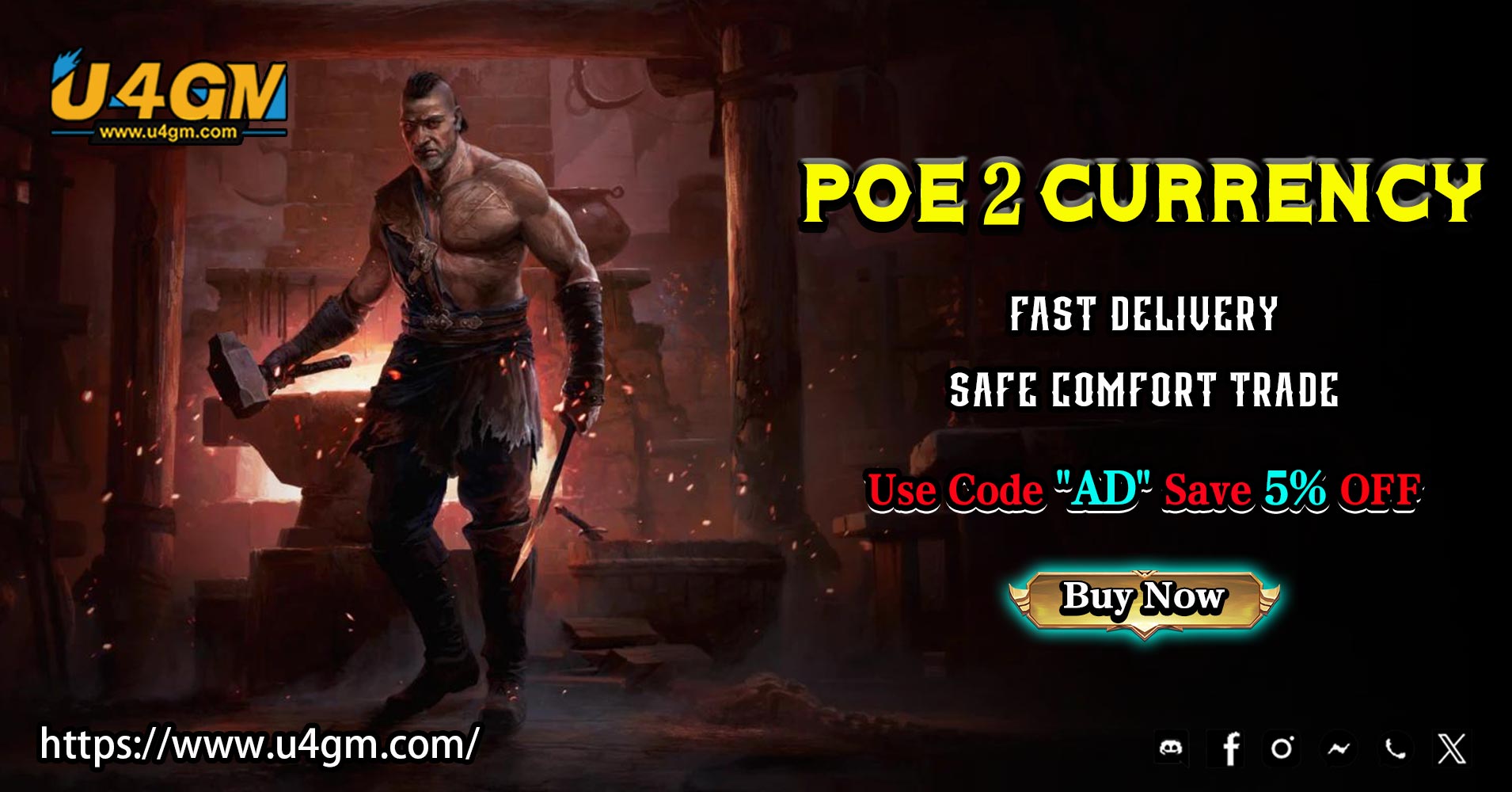- Home
- AGO Member Forum
- How does poe 2 revolutionize its campaign structure?
How does poe 2 revolutionize its campaign structure?
Path of Exile 2 completely reimagines the traditional action-RPG campaign by abandoning linear progression in favor of a dynamic, player-driven narrative structure that creates personalized adventures through meaningful choices and multiple pathways. This architectural shift transforms the story from a predetermined track into an adaptive experience where player agency directly influences both narrative outcomes and gameplay rewards, creating unprecedented replayability and immersion. Unlike the original game's sequential act structure, Path of Exile 2 introduces a sophisticated web-like campaign layout where completing key objectives unlocks multiple potential zones to explore next, allowing players to tackle challenges in different orders based on their character's strengths, current equipment, or personal preference.
The campaign is built around pivotal decision points that permanently alter a player's experience within that playthrough. Early narrative choices create cascading consequences throughout the entire game, not merely changing dialogue but unlocking entirely different zones, boss encounters, and NPC interactions in later acts. Supporting the Imperial Army in Act II might grant access to fortified military outposts and siege warfare scenarios in Act IV, while aiding the Rebel Tribes could open guerrilla-style missions in dense forests with completely different enemy types and environmental challenges. These branching paths ensure that a second playthrough isn't just harder—it's substantively different, encouraging players to explore alternative narratives to discover how their choices reshape the world. The implementation extends beyond major decisions to include subtle moral choices that affect faction reputations, determining which vendors offer rare crafting bases and which quest lines remain available in the endgame.
 This non-linear design is enhanced by the integration of discovery-based storytelling that replaces traditional quest markers with environmental investigation. Instead of following explicit directions, players uncover narratives through subtle environmental clues—a trail of discarded soldier insignias leading to a hidden deserters' camp, specific destruction patterns in a library revealing a secret passage, or spectral echoes that replay key historical events when triggered. Solving these environmental mysteries rewards players with self-contained stories told through visual design, interactive flashbacks, and audio logs that provide rich context about the world's history. This approach transforms exploration from simple path-following into an engaging investigative process where the most compelling stories are reserved for those who examine their surroundings with curiosity and attention to detail.The true revolution lies in how Path of Exile 2's campaign seamlessly integrates with its character progression systems to create a cohesive journey. Rather than treating the campaign as a separate tutorial phase before the "real game" begins, the expansion incorporates character-building decisions directly into narrative progression. Certain zones, quests, and crafting recipes are gated behind specific class choices or playstyle decisions, ensuring that experimenting with new builds unlocks fresh content and narrative perspectives. The voiced protagonist system reinforces this integration, with character reactions and dialogue options changing based on your Ascendancy class and previous decisions. By creating a campaign where narrative choices have tangible gameplay consequences and character development opens new story possibilities, poe 2 items sale erases the traditional division between leveling and endgame, making the journey to maps feel as thoughtfully designed and personally meaningful as the destination itself.
This non-linear design is enhanced by the integration of discovery-based storytelling that replaces traditional quest markers with environmental investigation. Instead of following explicit directions, players uncover narratives through subtle environmental clues—a trail of discarded soldier insignias leading to a hidden deserters' camp, specific destruction patterns in a library revealing a secret passage, or spectral echoes that replay key historical events when triggered. Solving these environmental mysteries rewards players with self-contained stories told through visual design, interactive flashbacks, and audio logs that provide rich context about the world's history. This approach transforms exploration from simple path-following into an engaging investigative process where the most compelling stories are reserved for those who examine their surroundings with curiosity and attention to detail.The true revolution lies in how Path of Exile 2's campaign seamlessly integrates with its character progression systems to create a cohesive journey. Rather than treating the campaign as a separate tutorial phase before the "real game" begins, the expansion incorporates character-building decisions directly into narrative progression. Certain zones, quests, and crafting recipes are gated behind specific class choices or playstyle decisions, ensuring that experimenting with new builds unlocks fresh content and narrative perspectives. The voiced protagonist system reinforces this integration, with character reactions and dialogue options changing based on your Ascendancy class and previous decisions. By creating a campaign where narrative choices have tangible gameplay consequences and character development opens new story possibilities, poe 2 items sale erases the traditional division between leveling and endgame, making the journey to maps feel as thoughtfully designed and personally meaningful as the destination itself.
The campaign is built around pivotal decision points that permanently alter a player's experience within that playthrough. Early narrative choices create cascading consequences throughout the entire game, not merely changing dialogue but unlocking entirely different zones, boss encounters, and NPC interactions in later acts. Supporting the Imperial Army in Act II might grant access to fortified military outposts and siege warfare scenarios in Act IV, while aiding the Rebel Tribes could open guerrilla-style missions in dense forests with completely different enemy types and environmental challenges. These branching paths ensure that a second playthrough isn't just harder—it's substantively different, encouraging players to explore alternative narratives to discover how their choices reshape the world. The implementation extends beyond major decisions to include subtle moral choices that affect faction reputations, determining which vendors offer rare crafting bases and which quest lines remain available in the endgame.
 This non-linear design is enhanced by the integration of discovery-based storytelling that replaces traditional quest markers with environmental investigation. Instead of following explicit directions, players uncover narratives through subtle environmental clues—a trail of discarded soldier insignias leading to a hidden deserters' camp, specific destruction patterns in a library revealing a secret passage, or spectral echoes that replay key historical events when triggered. Solving these environmental mysteries rewards players with self-contained stories told through visual design, interactive flashbacks, and audio logs that provide rich context about the world's history. This approach transforms exploration from simple path-following into an engaging investigative process where the most compelling stories are reserved for those who examine their surroundings with curiosity and attention to detail.The true revolution lies in how Path of Exile 2's campaign seamlessly integrates with its character progression systems to create a cohesive journey. Rather than treating the campaign as a separate tutorial phase before the "real game" begins, the expansion incorporates character-building decisions directly into narrative progression. Certain zones, quests, and crafting recipes are gated behind specific class choices or playstyle decisions, ensuring that experimenting with new builds unlocks fresh content and narrative perspectives. The voiced protagonist system reinforces this integration, with character reactions and dialogue options changing based on your Ascendancy class and previous decisions. By creating a campaign where narrative choices have tangible gameplay consequences and character development opens new story possibilities, poe 2 items sale erases the traditional division between leveling and endgame, making the journey to maps feel as thoughtfully designed and personally meaningful as the destination itself.
This non-linear design is enhanced by the integration of discovery-based storytelling that replaces traditional quest markers with environmental investigation. Instead of following explicit directions, players uncover narratives through subtle environmental clues—a trail of discarded soldier insignias leading to a hidden deserters' camp, specific destruction patterns in a library revealing a secret passage, or spectral echoes that replay key historical events when triggered. Solving these environmental mysteries rewards players with self-contained stories told through visual design, interactive flashbacks, and audio logs that provide rich context about the world's history. This approach transforms exploration from simple path-following into an engaging investigative process where the most compelling stories are reserved for those who examine their surroundings with curiosity and attention to detail.The true revolution lies in how Path of Exile 2's campaign seamlessly integrates with its character progression systems to create a cohesive journey. Rather than treating the campaign as a separate tutorial phase before the "real game" begins, the expansion incorporates character-building decisions directly into narrative progression. Certain zones, quests, and crafting recipes are gated behind specific class choices or playstyle decisions, ensuring that experimenting with new builds unlocks fresh content and narrative perspectives. The voiced protagonist system reinforces this integration, with character reactions and dialogue options changing based on your Ascendancy class and previous decisions. By creating a campaign where narrative choices have tangible gameplay consequences and character development opens new story possibilities, poe 2 items sale erases the traditional division between leveling and endgame, making the journey to maps feel as thoughtfully designed and personally meaningful as the destination itself.

